Skin SOS: 3 Steps for Managing Severe Allergies in Dogs

Spring has sprung and so have the histamine levels…for my dog. Sadly my littlest love, Delilah, has severe skin allergies. We’re talking dry and flaky skin. Dermatitis and inflammation with the periodic yeast infection. Super itchy skin to the point of scratching herself raw if I’m not careful, level of skin allergies.
Along with the help of our vet and dog dermatologist (yes that’s a thing), Delilah and I are about a year and a half into her allergy management journey. So today, I’m sharing our process so far on managing dog allergies.
Trust Your Instincts
Delilah did not initially suffer from any allergies. I adopted her when she was around five months old but her allergies didn’t begin to manifest until she was closer to 18 months old. And unfortunately canine allergies tend to get worse as our dogs age; not better.
Delilah’s first symptoms were excessive itching, darkening skin on her belly and head shaking. And while I did take her to our vet (who is lovely) to have her checked out, it wasn’t until our third visit that she was properly diagnosed with allergies. And it took another two visits of examinations and symptom management attempts for my vet to recommend I take Delilah to a specialized pet dermatologist.

So my advice here is trust your instincts. Even though my vet is wonderful and has been great with all of my dogs, I did have to be persistent in bringing Delilah back for repeated visits because I knew my dog was uncomfortable…and she was getting worse.
Be your pet’s advocate even when you don’t know exactly what is wrong.
Identifying Your Dog Allergies Takes Time
Once I was referred to our doggie dermatologist ( and yes in our case we needed an actual referral from our vet) it took another THREE months to even get a consultation. Apparently a long waiting period is common when trying to get your pet in to see a non-emergency specialist.
However, once we were accepted as patients our dermatologist bends over backwards to have regular diagnostic and maintenance appointments.
Also I’d be remised at this time not to mention that dog dermatologist appointments and accompanying diagnostic tests are extremely expensive. Like definitely invest in pet insurance if you have not already expensive. A fair starting range would be to take your normal vet’s rate and double it… to start.

The very first step was to identify what exactly Delilah was allergic to while managing her itch level and accompanying infections/complications. As I mentioned, because she was excessively scratching herself, Delilah developed some mild skin infections and a yeast infection. So the dermatologist prescribed Apoquel and Fluconazale. The same time, we began to rule out food allergies.
It was at this time I learned allergies, especially food allergies, among dogs are extremely common. In fact canine allergies are one of the leading reasons for vet visits. Who knew?
If you’re wondering what a food allergy identification process looks like, for us it was a long process. Approximately six months. So while her medication, I began with a hypoallergenic diet which lasted for 8 weeks. During that time Delilah was switched to a rabbit and sweet potato prescribed dog food from Royal Canine. I also had to limit her treats and she was placed on prescribed 1-ingredient treats as well.
This first stage allowed her system to calm down and reset. Once completed, under our dermatologist’s supervision, Delilah was gradually introduced to different foods.
We reintroduced Delilah to the different proteins, carbs and veggies she had previously been eating, one at a time. We’d then monitored for any hint of symptoms returning. I kept a strict food diary for her and between food introduction periods, Delilah returned to her hypoallergenic diet.
Interesting Fact: only approximately 20% of dog allergies are food related and the most common cause of these allergies are protein-related.
Fortunately or unfortunately, Delilah passed the food allergy elimination process with flying colors. That meant we had to move on to the next phase of allergy testing. Intradermal testing or radioallergosorbent testing.
Intradermal Testing
Affectionately often referred to as “the patch test” or “skin test” is probably the better known dog allergy test. Your dog’s fur is shaved down in one area and a series of 60 different pricks are made. Hives develop at the sites to indicate your dog is allergic.
RAST or Radioallergosorbent Testing
The more expensive, and accurate, of the two tests, RAST is an actual blood test. A blood sample is taken and sent away to a lab for testing. Results are sent back after several weeks. This test is considered more accurate as it’s less likely to produce a false positive.
In our case, because Delilah is so small (10lbs on her best day), we went for the RAST. Honestly I don’t think 60 pricks could have even fit on her side.
Once the test came back, we had a very detailed list of Delilah’s exact triggers…and oh my word what a list. She’s allergic to cotton, several different varieties of common trees and grass, black ants, fleas and a half dozen other items. No wonder her hair was falling out.
With this information known, our dermatologist was able to have a personalized immunotherapy cocktail created for Delilah to help her immune system cope. This therapy is injected via a small needle under her skin.

Intentionally, Delilah had to be weened onto her injections over approximately 3 months on a schedule which expanded from once every other day to finally once every other week — which is her regular maintenance schedule.
While she is doing much better, as we do live in Georgia, this past spring resulted in a nasty flare up for her. It’s heartbreaking as a dog mom to watch my little one be so miserable. And it’s frustrating when you are trying everything to bring her relief.
Natural Dog Skin Allergy Supplemental Treatments
So as you can tell we are not out of the woods yet with Delilah. We are still very much on our journey to balance her allergies.
But that this point since she is on her immunotherapy and is still taking Apoquel, I’m not exploring other natural compliments to her care.
I’ve purchased an air purifier for the apartment to help reduce irritants. Delilah now wears shoes outdoors to protect her feet during walks. She also gets skin soothing baths using Douxo S3 Calm Shampoo. I also learned organic coconut oil is a great natural way to moisturize Delilah’s skin while also serving as a mild antifungal agent. And, lastly, I incorporate omega-3 into her diet to help protect her coat.
In the meantime, Delilah and I hope our update has given you some insight into how to identify and manage dogs with severe, non-food related skin allergies. And we’ll be back soon with another progress report.

![Can My Dog Eat That? [8 Tasty Treats You Can Share With Your Dog]](http://lindseyandcoco.com/cdn/shop/articles/IMG_7024_400x.jpg?v=1619574839)
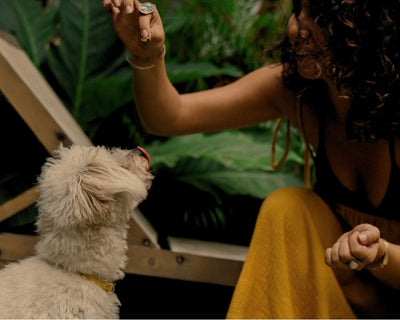
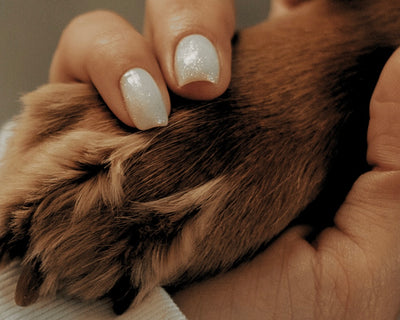
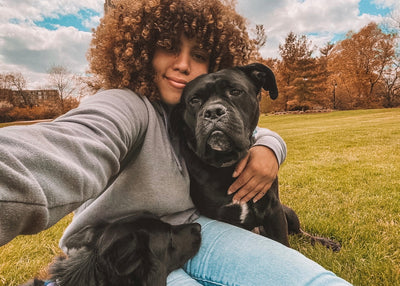
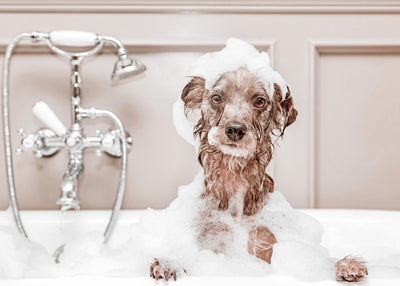

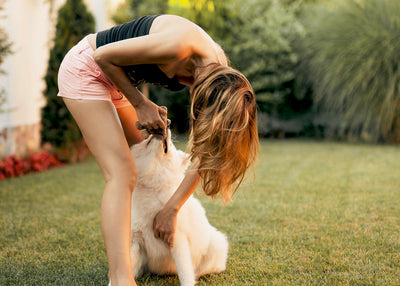
![Let Sleeping Dogs Lie [Top 5 Pet Beds To Please Your Pup + Compliment Your Decor]](http://lindseyandcoco.com/cdn/shop/articles/F871FB00-254E-481A-BD8C-58612214D443_400x.jpg?v=1630878682)